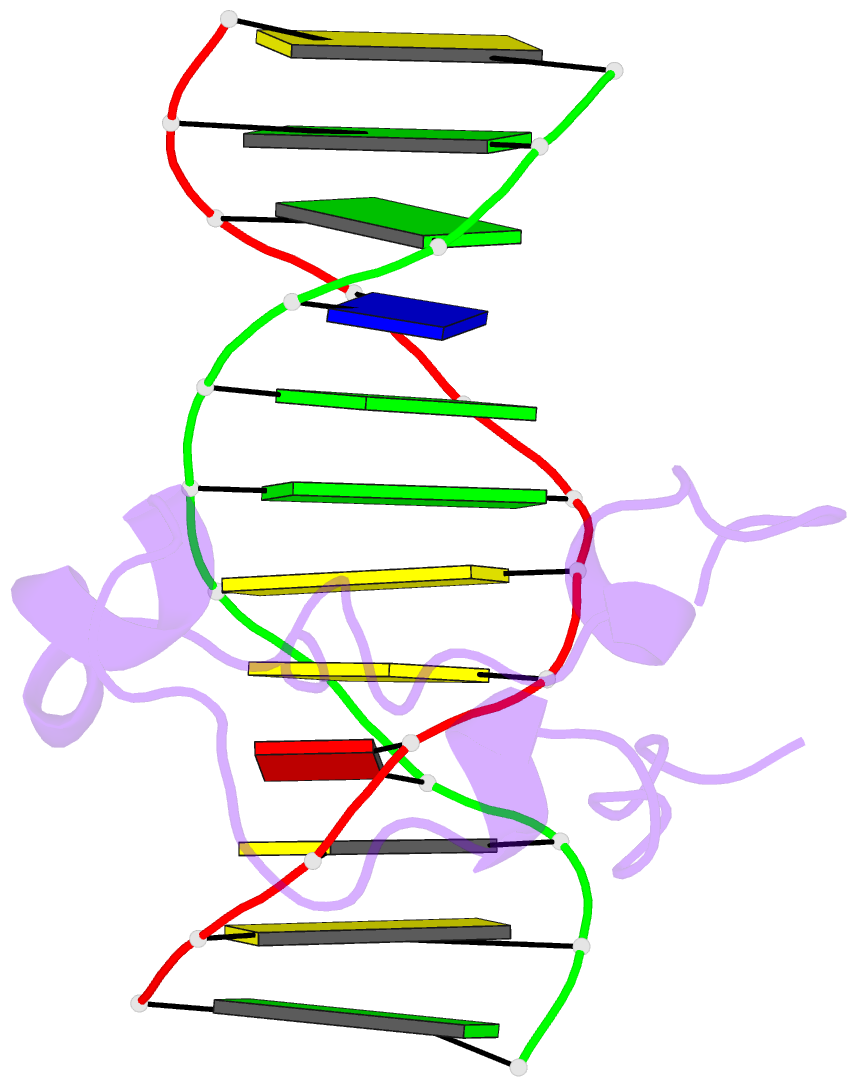Summary information and primary citation
- PDB-id
- 4hp1; SNAP-derived features in text and JSON formats;
DNAproDB
- Class
- DNA binding protein-DNA
- Method
- X-ray (2.25 Å)
- Summary
- Crystal structure of tet3 in complex with a non-cpg dsDNA
- Reference
- Xu Y, Xu C, Kato A, Tempel W, Abreu JG, Bian C, Hu Y, Hu D, Zhao B, Cerovina T, Diao J, Wu F, He HH, Cui Q, Clark E, Ma C, Barbara A, Veenstra GJ, Xu G, Kaiser UB, Liu XS, Sugrue SP, He X, Min J, Kato Y, Shi YG (2012): "Tet3 CXXC Domain and Dioxygenase Activity Cooperatively Regulate Key Genes for Xenopus Eye and Neural Development." Cell(Cambridge,Mass.), 151, 1200-1213. doi: 10.1016/j.cell.2012.11.014.
- Abstract
- Ten-Eleven Translocation (Tet) family of dioxygenases dynamically regulates DNA methylation and has been implicated in cell lineage differentiation and oncogenesis. Yet their functions and mechanisms of action in gene regulation and embryonic development are largely unknown. Here, we report that Xenopus Tet3 plays an essential role in early eye and neural development by directly regulating a set of key developmental genes. Tet3 is an active 5mC hydroxylase regulating the 5mC/5hmC status at target gene promoters. Biochemical and structural studies further demonstrate that the Tet3 CXXC domain is critical for specific Tet3 targeting. Finally, we show that the enzymatic activity and CXXC domain are both crucial for Tet3's biological function. Together, these findings define Tet3 as a transcription regulator and reveal a molecular mechanism by which the 5mC hydroxylase and DNA binding activities of Tet3 cooperate to control target gene expression and embryonic development.





